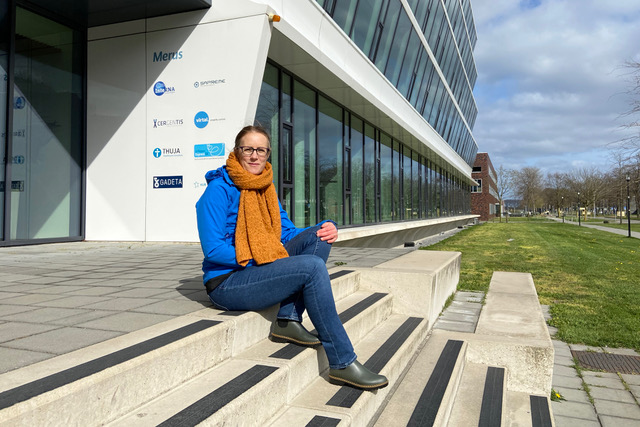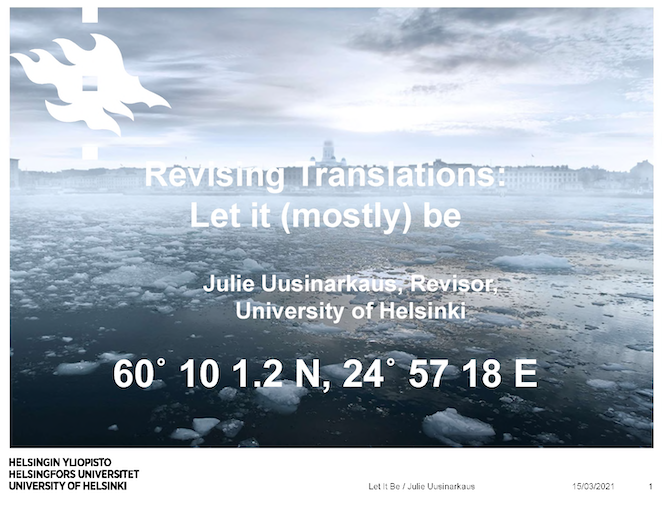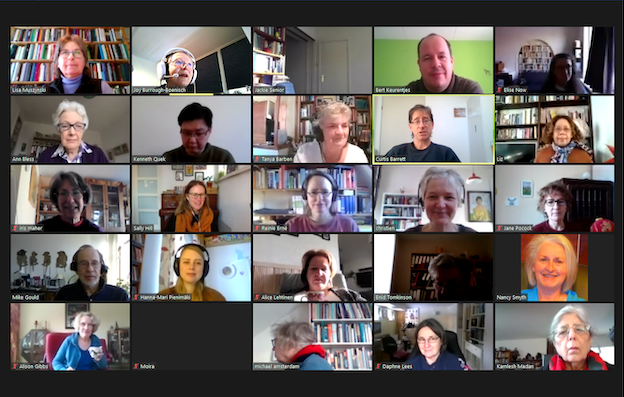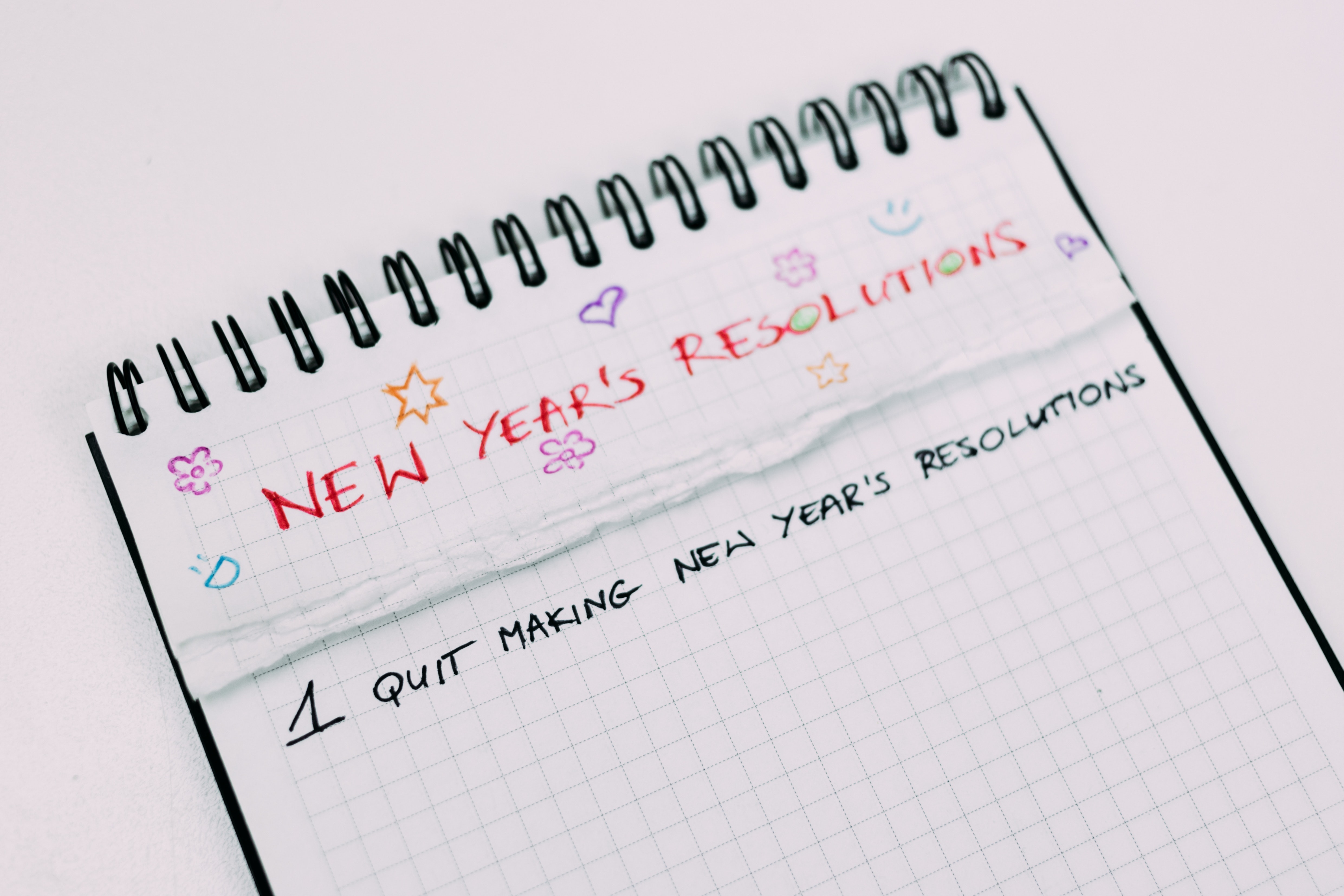
On 15 March, about a dozen SENSE members came together online to enjoy a lively chat in good company. We had planned the informal get-together to last for one hour but it turned out, once more, that time does indeed fly when you are having fun. The event ran on longer than the convener had bargained for and we will definitely plan a longer event next time.
The main reason for this lively evening was down to one of our newest SENSE members, who had a few interesting questions about getting started as a freelancer. This sparked a civilised discussion on setting up shop, post-editing (which will be covered in another post) and the oldest trick in the teacher’s book.
In today’s labour market, everybody seems to be focused on having the right qualifications. Thankfully, the language industry has a more pragmatic outlook on certificates. Holding a Master’s degree in translation and a PhD in engineering is very helpful if you want to become a technical translator. However, most translators will agree that you learn most about translating when translating. Demonstrating you can provide high-quality translation, or meticulous editing, is more important than impressive degrees. As one SENSE member pointed out, many members started before there were any specialised translation degrees to attain. Another member confirmed she made a living from the ‘mere’ fact that she knows English and can edit English text.
That said, it can still be daunting to venture into the world of translation and editing. As this event proved, translators and editors are very supportive of one another. Most see each other as colleagues and peers rather than competitors, and are happy to help or answer your questions. Newcomers to the profession are encouraged to find a more experienced translator or editor to check their work regularly. If you are new to the field, you can also sign up for SENSE’s Mentoring Programme to benefit from the help and support of a seasoned colleague.
We also discussed that conferences can be a useful way to learn, and that they provide a good opportunity for expanding your network. The BP conference, named after its place of origin Budapest, is an online conference that comes recommended by several members. The conference focuses on business practices for linguists and is very affordable.
During our discussion, we received a great tip that every language teacher should know. Oftentimes, speaking softly will force your students to be quiet and listen, otherwise there is no way of knowing what you’re actually saying. It’s a trick of the trade to grab their attention. Conversely, raising your voice to rowdy students will only make the cacophony worse!
Finally, as is tradition, we appointed a Southern SIG Member of the Month, that is to say, the attendee who is located farthest down south. Our first Southern SIG Member of the Month, Karen Leube, was succeeded by Kees Kranendonk, who joined us all the way from southern Spain. Congratulations, Kees!

Few subjects are as controversial among translators* as machine translation post-editing (also known as MTPE or simply post-editing). Many translators say they wouldn’t touch machine translation with a bargepole, while others argue it is the future of translation and resistance is futile. In this blog post, I do not intend to advocate any particular position. I do recognise, however, that machine translation is here to stay and that the technology will only become more sophisticated and more widely used. I think that language professionals should be able to make an informed decision about post-editing, and I hope this blog post will help you make that call.
To this end, this article examines some of the drawbacks and advantages of post-editing from a freelance translator’s perspective. Furthermore, it provides a few practical tips on how to approach offers of post-editing work for those considering giving it a go. What post-editing means or how machine translation works is outside the scope of this blog post.
Drawbacks
One of the most striking issues with post-editing is the lack of work satisfaction. I have yet to meet anyone who enjoys post-editing or takes pride in working with this technology. Post-editing machine translation is often compared to fixing a very poor translation. Machines make entirely different kinds of mistakes and do so more repeatedly than any human translator ever would. For this reason, post-editing involves correcting the word order or inexplicably inconsistent terminology, among other unexciting things, and it quickly becomes tedious.
In addition, the purpose of machine translation is to make translation cheaper and quicker. As often cited, you can only pick two out of three in terms of cheap, quick and good. The result of your post-editing, therefore, is expected to be ‘fit for purpose’. A post-editor rarely has the time, nor are they paid, to go beyond fixing grammatical issues and the worst terminology problems. Improving the readability of the text, adapting the message to the readership or just making the translation prettier is more often than not out of the question. Yet these are precisely the areas in which a human translator can excel and get work satisfaction.
Strangely, the fact that it is unpleasant work does not mean post-editors are paid more. Quite the contrary, rates are often slashed, with the argument that the text is already ‘pre-translated’ and will take less effort to complete. This, in turn, means less time is available for the translation in order to earn the same amount. The focus shifts from translation quality to time spent, which again is very unsatisfactory.
It should also be noted that although there are similarities, post-editing requires a different skill set to translating or editing a translation because of the nature of machine translation. Post-editing doesn’t necessarily make you a better or more experienced translator. Translation is a craft best mastered through translating and both new and seasoned translators should be aware of the risk of overly relying on a machine. Machine translations can and will produce unusable output and you need to remain capable of translating yourself.
Advantages
The above drawbacks do not make post-editing very alluring and the advantages for the translator are often overlooked. Of course, the pay for post-editing is often much lower compared to human translation. But if you find yourself experiencing lulls in your work schedule, it can be interesting as a new line of additional revenue. To put it bluntly, poorly paid, uninteresting work is sometimes better than no work at all.
Furthermore, as I mentioned before, the quality of machine translation output is expected to improve over time, which should mean you will need less and less time to make the result acceptable. This higher productivity will result in a better pay per hour, which is fair, considering the results of your efforts will most likely have been used to train the machine and help it to learn from its mistakes. Indirectly, you will have contributed to that productivity increase.
Although striving for less than perfect quality can be very frustrating, you can use the lower expectations to your advantage. Since this doesn’t need to be your finest work, you can put less time and effort into it, saving you time and energy to spend on other, more challenging tasks. I am a morning person myself and I prefer to work on revisions and actual translation in the morning and postpone post-editing to the late afternoon when my concentration starts to drop. Needless to say, you should always meet the agreed quality standards, but post-editing doesn’t require the most productive moments of your day.
Lower quality standards can also mean more room for error. If you have no particular specialisation yet, post-editing can be a relatively safe way to dip your toe into the water. You can try out something new as a post-editing job, whereas you would feel daunted taking it on as a translation job. It may not help you become a better translator per se, but doing your terminology research to check whether the machine translation output actually makes sense can be a valuable learning experience.
Practical advice
Suppose you have considered the pros and cons of post-editing and decide to try it out. The first thing you should do is set clear ground rules with your client. If the client is asking you to accept a lower rate for post-editing, it is only fair to point out they cannot expect your usual quality.
Furthermore, machine translation handles some types of content better than others and it is important to remember the technology’s limitations. Post-editing simple, repetitive technical texts, like microwave manuals or help instructions, may well be twice as fast as human translation. Post-editing highly visible marketing copy, containing puns and cultural references, is probably a recipe for disaster. Discuss your concerns upfront and agree to be paid your usual rate if the machine translation output is indeed disappointing and you have to start from scratch.
Make sure you have a healthy mix of post-editing, translation, editing and maybe other work. As you almost certainly won't enjoy post-editing, you should make sure you keep working on interesting projects as well. In addition, keep in mind that you are not translating the text and you are aiming for a lower quality bar than usual. Nobody will complain about quality being too high, but your efforts won’t be reflected in your invoice.
If you don’t know what to expect from a human translation project, you would usually ask to see the source text. Similarly, it is perfectly normal to ask for a sample of the machine translation to assess if the output is any good and whether the suggested rate is appropriate for the effort needed. Finally, asking for feedback on your post-editing is just as professional as asking for feedback on your translation work.
Closing remarks
I would like to point out that I strongly believe the technology will not put translators out of work. As has been said by others before, machine translation is only a threat if you translate like a machine. Human translators will remain the best option for attractive marketing copy or highly specialised translation.
Moreover, it is important to note that machine translation will only render useful results after being fed millions and millions of words’ worth of high-quality human translation about that particular subject. In other words, machine translation needs human translation. If a client launches a brand-new, revolutionary product, machine translation will be of hardly any use because of the lack of previous human translations. Although the AI experts feel confident that machine translation will reach near-human quality in the years ahead, they do recognise the final 5% required to reach actual human translation quality will be extremely difficult to achieve. I dare to wonder whether human translators will ever be taken out of the equation completely.
In this article, I have taken a very pragmatic view of post-editing, but I am by no means a ruthless businessperson looking for a quick buck. On the contrary, I am a professional translator who takes pride in his work. I prefer translating to post-editing any day of the week. That said, I do think freelance translators should consider machine translation post-editing as a business opportunity rather than a threat to the profession. However, if you feel you would be deeply unhappy post-editing and have enough work coming in, or if it just doesn’t work for your specialism, the disadvantages will probably outweigh the advantages. If you could use a little extra work, it may be worth considering it in earnest. Finally, remember that you are a freelancer and the choice is entirely yours.
*When I use the word ‘translator’ I mean both translators and editors, considering the merits of post-editing for their work.

Although many SENSE members are freelancers, this is not always the case. SENSE member and former freelancer Sally Hill has just started a new in-house job at an international biotech company. Claire Bacon caught up with her in the week she made the switch.
You are starting your new job as a scientific writer on 1 April. How long have you been working as a medical and scientific writer and when did you realize you wanted to make this your full-time job?
When I set up my business 13 years ago, it was initially as a freelance Dutch-English translator in the life sciences. I soon felt confident enough to offer editing as well, and through SENSE I got involved in teaching scientific writing. It wasn’t until about six years ago that I first started getting writing assignments too – from the same company I’m now moving to. The scientific reports I write for them are quite technical and nerdy, and right up my street. This encouraged me to look for similar clients, and I discovered the world of medical writing and the European Medical Writers Association (EMWA). Through this professional network, I realized that medical writing might be better suited to my science background.
But it was only recently that I thought of taking up this client’s offer of a part-time contract –previously, it would have been near impossible to schedule my teaching activities around fixed days at an office. Various things came together over the past few months: teaching for two of my university clients came to an end; all my other teaching went online because of the pandemic and the increased screen time was giving me back and neck issues; plus, my husband was thinking of going freelance himself. For financial security, we decided one of us should be on a fixed contract, and I was ready for a change!
I imagine the skills for medical and scientific writing overlap a little with those for medical editing. What makes you more suited to writing rather than editing?
When I write for scientists, they really appreciate my critical questions and attention to detail – in other words, the aspects that made me rather a slow editor improve the quality and consistency of their documentation. When editing, I probably take too much time looking up references and researching the topic of a research paper I’m editing – often purely out of interest in the science, which I think I’ve probably always missed. But of course, my experience as an editor makes me a much better writer. And now I have a junior writer to help train up, for which my teaching experience will also come in handy. Win-win!
Did you do any special training when you transitioned to medical writing, or did you learn on the job?
It was mainly on-the-job training. In general, scientists become familiar with scientific writing during their master and doctoral studies, so it’s not something you need training in if that’s your background. And that’s where the scientists at the company ‘learned’ to write – not that their English is perfect, but for internal documentation that’s often less important. Of course, after I started offering scientific and medical writing as part of my business, I made sure to brush up my writing skills where possible by attending relevant webinars and workshops. I attended EMWA’s virtual conference last year and hope to go to the next one in May.
What advice would you give anybody who wants to move into medical writing? Does it help to work as an editor first?
Being a science editor certainly gives you a head start. But many medical writers are not native English speakers, and many have no formal language skills or training. Apart from the scientific writing that I do, medical writing can also include things like translation, statistics, regulatory writing, project management, marketing and copywriting. You don’t necessarily need specific training, but from what I can tell it can be hard to get a job without a bit of experience. Many people work in a related field before applying for a medical writing job.
EMWA offers lots of training workshops at their twice-yearly conferences and their website has a wealth of information and resources, including a useful Career Guide to Medical Writing. You can also join the Netherlands Science and Medical Writers Network that I helped set up with other freelancers. We have private groups on Facebook and LinkedIn where aspiring and experienced medical writers – both freelance and in-house – can ask questions, share resources and post jobs.
You are going to be working for Merus in Utrecht. What attracted you to this company?
Before making this decision, I did think carefully about whether we were a good match. Before the first lockdown, when I was still freelancing for them, I was going into the Merus offices once a week. Attending meetings and eating lunch in the staff canteen improved communication in general and helped my ‘colleagues’ know who I was. This also gave me a pretty good feel for the company and the people who work there. My gut feeling says they care about their employees; they pay them well and morale is good. I also really like the international feel of the place – they also have offices in the US and the staff are from all over.
What will you miss most (and the least!) about being freelance?
I think I’ll probably miss the camaraderie of my freelance colleagues. As a freelancer, networking has become second nature and I can get a real kick out of making connections with others, even if I don’t necessarily know whether it’ll bring in new work. Of course, I can still stay connected with others and continue to expand my network, but it won’t be part of my working day anymore.
What I won’t miss is the admin! I tend to put off my quarterly tax returns, and the paperwork can really pile up towards the deadline. And, of course, I won’t miss the uncertainty of being my own boss, and the pandemic has brought this home to many of us. While I was fortunate to see no drop in income over the past year, the idea that I no longer have to keep an eye out for new clients in case current ones let me down is very reassuring.
Everyone will want to know whether becoming a full-time medical writer means you are leaving SENSE! Do you plan to stay involved with the Society? And do you think scientific and medical writers can benefit from SENSE membership?
It really hadn’t occurred to me to leave SENSE! Of course, I’m no longer a freelancer and I’m no longer translating/editing/teaching. But that doesn’t mean I don’t need the expertise of SENSE colleagues or that I am no longer willing to share my own. I’ll have Fridays off and so will still have a few hours a week left for my various bits of voluntary work (including SENSE) and for my one-to-one coaching clients.
In terms of what the Society can offer to scientific and medical writers, I recommended SENSE to an aspiring medical writer only last week. This non-native English speaker with a science PhD wanted help in developing writing skills before applying for writing jobs. I recommended that they join SENSE and team up with a mentor to get feedback on their writing. I know of no other organization in the Netherlands that offers a similar mentoring programme. In that respect, SENSE really is an ideal association for professionals in the Netherlands looking for support in developing their English language skills.

Hear the term ’compliance’ and most of us in the language business (or any business) will shrink a bit – especially when it’s tied to an acronym like ’GDPR’. This refers to the General Data Protection Regulation which represents the legislation passed by the European Commission in 2016 to update what has been an evolving policy on protecting the private information of individuals living in the European Union. This set of regulations was activated in 2018.
Though it might seem applicable only to big companies and online commerce, it applies to anyone conducting business in the EU, including freelance language professionals. If you’re not safeguarding the personal data that has been coming across your desk, it’s time to start wrestling with that hidden beast.
Luckily, Steven Segaert has been studying the beast and its implications for language professionals. Steven is a freelance English–Dutch translator and a lawyer based in Belgium. At the recent Tech SIG he summarized it thus:
’Know what you have, and why you have it’ and ’limit as much as possible’ what you have.
Steven led us through a methodical process we can apply to identify and protect relevant information we may have. Describing first what personal data actually is, he then introduced how to do a data mapping exercise to understand what you have and how to categorize it.
This obviously can get complex if you are a large entity such as Google or bol.com; for freelance language professionals, Steven noted, it ‘is not terribly difficult…but there are chances we are doing things that are not totally okay.’
The intention of the GDPR is to limit the processing of personal data to only what has a legitimate business purpose, to the least extent possible, and to ensure that you are transparent about what you do and accountable for how you protect the data. The important thing is that you can reasonably explain why it is necessary to process the personal data in your possession – for example, to market your services, or because you are legally required to keep records for a specified number of years.
Once you’ve trapped your beast, you need to know how to take care of it. Security was not discussed at great length, but the lively Q&A touched on email, translation memory, and the horror of a lost (or stolen) laptop.
Accidentally losing your laptop in a café or on the train doesn’t have to be a GDPR disaster in addition to a work disrupter – but it can open you up to risk if you have not documented (elsewhere) what personal data was on the laptop and how it was secured.
GDPR compliance can be a complex undertaking, but setting aside some time for it, you will, in Steven’s words, ’already be doing more than 90% of freelancers’ in capturing and taming your personal data beast, and protecting yourself and your clients from risk.
Steven’s bracing and thorough presentation got us all talking about our workflows in a new way, and suggested some new approaches to our business and technical systems.

The meeting was convened by Joy Burrough-Boenisch, who welcomed the 29 members who attended the Zoom meeting. Joy introduced the speaker, Julie Uusinarkaus, who works as revisor at the University of Helsinki.
Julie started her presentation with a picture of ice floes in Finland and explained that she works as in-house revisor, academic editor and freelance design editor. The revision at the university involves translated material, very often fairly routine texts such as university regulations, curricula and news releases etc.
There are four in-house translators (Finnish native speakers) and up to ten freelance translators, working as a long-standing team. The official languages of the university are Finnish, Swedish and English, and no language is supposed to take precedence.
Julie explained the revision process, which she described as relatively simple. The team works in a bilingual Trados interface – we were shown a specimen screenshot of a translation. The translation first comes from the translator, and is then revised by a second translator and a revisor, who carry out two quality checks. The first, done by a second translator, is of the facts and translated vocabulary. The second quality check, which is done by the revisor, is of the readability of the text as a whole from the viewpoint of a native speaker. The original text must be followed as closely as possible and the aim is to have a clear text in the style of the university. The text is then returned to the original translator. A record is kept of all the points of discussion and any compromises. The author has final authority over the text.
The university translation team has its own in-house style; certain stylistic points have been the subject of discussion before agreement was reached, eg, representation of telephone numbers, 24-hour clock and commas after 'e.g.' and 'i.e'.
Julie introduced a number of examples and held a poll for each. The results of the poll were particularly enlightening for us and for Julie. We were given two versions of the translation of a Finnish text and the original Finnish text. Julie pointed out the query points and we could choose which of the two versions we would opt for. Do we accept the edit? Does the edit change the original Finnish meaning? The examples led to a wealth of comments and suggestions in the chat. The last example introduced 300 elk incisors and a garment, and we were asked whether the structure of the sentence should be changed and whether the word 'decorated' or 'attached' was more appropriate. It was illustrative of Julie's presentation and became the subject of a particularly interesting and lively discussion - online, of course.

Most of us occasionally have to move our work to a new computer. In this article, I will give you a few tips on how to get started. However, the information is limited to PCs running Windows.
As an aside: the benefits of keeping your data on an external drive
Your PC has an internal hard disk drive (formerly a 'spinning rust' disc, now usually a Solid State Drive (SSD)). This contains the Windows operating system, program files and data. Although you could store your data (work, email, admin, etc) on the internal disk, I've always found it easier and safer to use an external drive. Therefore, whenever I have to take the PC in for repair, I can leave the external drive at the office, so I won’t have to worry about the repair shop having access to my data. When I go on holiday, I put the external drive in a safe; a burglar might walk off with my PC, but not with my data. This approach also makes it easier to comply with data protection legislation.
An external drive also makes it easier to move to a new PC: once you have set up all the software, you simply connect the external drive and continue as before. So, if you are not currently using an external drive for your data, moving to a new PC might be a good time to consider getting one!
Preparation
The first thing to do is take a close look at your current PC: what do you like about it and what could be improved?
Next, make a list of all the software you use and review that critically. The easiest way to get a full list is probably to go to Windows Settings > Uninstall or to Settings > Apps & Features, depending on the version of Windows you use.
Go through the list and see what software you actually use and need to install on your new computer. If the software is covered by a licence, you may be able to deactivate it on your old computer and then activate it on the new one. The relevant process is different for each software package.
Can you download the software on your new PC, or do you need to install it from a CD? If you are moving to a new version of Windows, you will have to check that your new computer is compatible with older software.
How you migrate your emails to the new computer depends entirely on the email software you use. If you only use web mail or another server-based email client, this will not apply to you. Now might be a good opportunity to consider if you want to keep working that way. You may also want to copy your browser bookmarks to your new PC.
This might also be a good opportunity to decide if you want to move to new software. For example, I moved from Adobe Photoshop to Affinity Photo: cheaper and available under a perpetual licence rather than a subscription.
Remember to make notes of the languages, keyboard layouts and other Windows settings you use. Do you want to keep the current drive letter assignments (eg, C: for programs, D: for data on the internal disk, G: for date on the external disk) or start afresh on your new PC? How do you back up your data, and do you want to continue using that method? Will you need to be able to restore old backups to your old PC? If so, do you need specific software or perhaps an optical drive?
Setting up your new PC
- Set up Windows and take a critical look at the security and privacy options. Being a paranoid Luddite myself, I've turned all the 'cloudy' functions of Windows off.
- Set the Windows keyboard and language options.
- Set up user and administrator accounts. Running Windows as a user rather than an administrator has some security advantages.
- Set up drive partitions and assign drive letters, using Windows Disk Management.
- I would advise making notes on paper of the most important settings, user names, passwords, etc and storing those in a secure place.
- The next step is to download and install all your software and activate licences where relevant.
Pro tip: if you find that Windows suddenly switches to a different keyboard while you're working, you may accidentally have pressed Alt + Shift. Press those keys again to switch back to your normal keyboard, or look for the keyboard box in the task bar at the bottom of the screen.
Every time I install new software, I also check that all my other important software still works and is not affected by the most recent software installation. If older software does not run under Windows 10, you can investigate the options available to you. If you right-click on a program and select Properties, the Compatibility tab will show you the available settings. Another option is to get advice from a computer wizard!
Moving your data to the new PC
Make sure your antivirus software, etc is operational. Connect the external drive containing your data to the new PC. Change the drive letter if necessary, then check that all the software works with it.
If you do not normally use an external drive for your data, you can use one temporarily to transfer data between the internal drives of your old and new computers. Alternatively, you can use cloud storage or an online service such as WeTransfer.
Creating resilience through installing alternative software
Software such as MS Office 365 and Adobe products is dependent on an active subscription, and regularly 'calls home'. That means that if something goes wrong with your account, or if you have extended connectivity problems, the software may simply stop working. At present you can still get MS Office under a perpetual licence, which avoids those problems.
If you normally use Adobe Acrobat to read PDFs, you may want to consider an alternative, such as Sumatra. I prefer that because it is nicely spartan and does not have automation features, which could create security issues if somebody sends you a dodgy PDF.
I have also installed LibreOffice on my PC. The software package is not dependent on a licence server and should always work. It is largely compatible with MS Office, and Libre Office Writer can apparently open some damaged Word files, should MS Word encounter any issues.
Notepad++ is a useful editor for opening any file and accessing data files for software which is no longer available.
Windows 10 does not include DVD playback software. VLC Media Player seems to be a good option and is free.
Last, but not least...
Before you start using your new PC in earnest, it would be a very good idea to test your backup and restore arrangements.
I hope these notes are of some help to those who have to move to a new PC. If you have any questions, then you may want to set up a thread on the SENSE forum. And of course, you’re always welcome to join the next Tech SIG meeting!

Editing is an ever-changing industry. To stay competitive, language professionals must continuously develop and hone their skills. There are many opportunities for continuing professional development (CPD) out there, but finding time for it can be tricky. In this post, I take a look at the different kinds of CPD and suggest how to make time for ongoing learning.
Virtual meetings
Conferences are a great way to find out what is new in your industry and to hone your skills. The pandemic has forced many conferences to move online, meaning you can now attend from the comfort of your own home (goodbye travel expenses!). Although we were disappointed not to be able to meet in person, I think we would all agree that SENSE 2020 was a big success. And those of us who attended the Chartered Institute of Editing and Proofreading (CIEP) 2020 conference were similarly impressed with the quality of the sessions and how well the conference had been adapted for an online audience. A big advantage of online conferences is that the sessions are often still available after the event, giving attendees plenty of time to catch up on anything they missed. So why not attend an online conference this year? Here are some examples of what’s on offer:
- ACES: The Society for Editing conference on 22–23 April
- CIEP conference on 11–14 September
- Mediterranean Editors and Translators (MET) conference on 14–15 October
- European Association of Science Editors (EASE) conference on 23–24 June.
Specialist training
Training courses are a good way to develop your editing skills. Once you have mastered the core skills, you can start to look for more specialist courses that interest you or are relevant to your work. I edit scientific research papers, so after completing some general copyediting training, the CIEP’s Medical Editing course seemed like a good place to refine my skills. Although some of the course content (such as the academic publishing process, and structure and format of standard research articles) was familiar to me after working as a research scientist, the course was invaluable because it taught me how to approach editing scientific texts methodically and be a more efficient editor. It also highlighted common style issues in medical editing. This specialist training raised my profile as an editor and helped me land jobs as a copyeditor for two medical journals.
Reading
Reading books that are relevant to your niche is an easy way to fit valuable CPD into your busy schedule. Books on academic writing give valuable insights into how I can better help my clients with their research writing (They Say/I Say by Gerald Graff and Cathy Birkenstein, Writing Science in Plain English by Anne E. Greene, Give Readers Nuggets by Ed Hull and Writing Science by Joshua Schimel are some of my favourites), while books about copyediting in general help to identify areas I need to work on (for example, Carol Saller’s The Subversive Copy Editor motivated me to make my editing more efficient by learning how to use Word’s features. Thanks to the CIEP’s course on Word for Practical Editing, I now use macros daily to speed up my editing).
Finding the time
One obstacle to CPD is finding the time to do it. Scheduling regular CPD time around your usual editing/translation work can help; perhaps an hour every morning for reading, or half a day a week to work through an online course. An accountability group of like-minded language professionals can help to keep you on track with your CPD goals.
If, like me, you suddenly found yourself spending hours every day home-schooling small children, taking an online course or scheduling time for reading might seem laughably unrealistic! Thankfully, there are easier ways to squeeze valuable CPD into your busy schedule: listening to podcasts while doing the ironing or spending time interacting in online groups, for example. Scrolling through the Editors Association of Earth Facebook group is a great way to find solutions to problems you didn’t know you had, and The Editing Podcast by Louise Harnby and Denise Cowle is crammed with useful information for writers and editors.
If you have any additional tips for effective CPD, share them in the comments below!

Welcome to SENSE, the Society of English-Language Professionals in the Netherlands! SENSE is a professional network for language professionals working in, into, or from English; English is our working language, but we’re happy to have you if your native language isn’t English or if you live outside of the Netherlands. Anne Oosthuizen, Martina Abagnale and Danielle Carter, the co-conveners of the Starters SIG (we’ll explain what that is below), have written this blog post to help you navigate SENSE as a new or soon-to-be member. Welcome!
Let’s jump right in: how should you get started when you join SENSE? And how can you get the most out of your SENSE membership? There’s a wealth of resources and information available via the SENSE network, so it can be a little intimidating trying to navigate it all – this guide will help you get started.
Joining SENSE
In case you haven’t already joined SENSE, you can find more information about becoming a member here and register to join SENSE.
Staying up to date
You can add the SENSE blog to your RSS feed. Once you become a member, you will also receive a newsletter with updates about new blog posts and membership-wide events. You can also follow SENSE on Twitter, join the closed SENSE LinkedIn Group, follow the SENSE LinkedIn page, and join the SENSE Facebook page.
SENSE also wants to hear from you! If you have a blog, SENSE will help to advertise your posts by occasionally sharing them on social media and in the newsletter. To notify SENSE about your blog, send an RSS link to
Special Interest Groups (SIGs)
The best way to stay tuned is to subscribe to relevant groups on the forum! SIGs are small, members-run subgroups within SENSE that cater to specific fields of interest, topics or regions. You can find a list of all the SIGs here.
You’re welcome to attend events from SIGs that you’re not subscribed to, and also feel free to attend, for example, Southern SIG events even if you live in Groningen (or Spain). Keep an eye on the calendar to find events that may be relevant for you.
Starters SIG
The Starters SIG is specifically geared towards people who are just getting started in the language industry or people who are changing paths within the industry. We organize monthly events on a variety of topics relevant for us; for example, finding initial clients, setting rates, or freelance marketing.
Forum
You can subscribe to any SIG on the forum to stay updated on their activity. In addition to a category for each of the SIGs, there are also various categories for different issues or interests. You can subscribe to a category and receive an email update for each new post by clicking on any category and then hitting “Subscribe” in the horizontal bar above “Subject.”
Some of the most important categories for getting started are Jobs (where SENSE members can post job opportunities), Professional Practice (a place to discuss some of the nitty gritty of work as a language professional), Resources (where members post resources that they’ve found helpful) and the Starters SIG group. You can also add a browser bookmark to the most recent topics so that you can check in on the latest posts in categories you’re not subscribed to.
The very first thing you should do is introduce yourself on the Introduce Yourself section of the forum.
Professional development
In addition to SIG events and the forum, the Best Practices handbook, the mentorship programme, the SENSE conference on alternating years with the Professional Development Day (see the calendar) all provide opportunities to develop your professional practice and advance your career.
You can also volunteer for SENSE, which is a great way to put yourself out there and get to know the many wonderful language professionals who are SENSE members. You can volunteer by setting up a SIG, joining a SIG as a co-convener or by helping with social media or event planning, for example.
Again, keep an eye on the calendar for other professional development opportunities! SENSE regularly hosts workshops and events.
External resources
You may have also noticed a few non-SENSE events on the calendar. The calendar is updated with other language-related events and conferences, and SENSE has a few sister organizations, which also host events and produce content that may be relevant for you.
Hot tip: It may seem funny to look into these other organizations, but you can find a variety of different events, networking groups etc and get a discount at SENSE’s sister organizations if you’re a SENSE member, so go on and see if there are relevant things happening in these organizations too!
In addition to SENSE’s sister organizations, you may also want to check out the Vertalerskoffiehoek (a Dutch-language translators Facebook group, which many SENSE members are a part of and which hosts a weekly co-working session), the Editors Association of Earth Facebook group, and the BP Translation conference (which hosts regular professional development events for translators).
If you’re still feeling a little lost or overwhelmed, get in touch! Post your question on the Starters SIG forum or email one of our conveners. We’ll help you find the way.

The 12 January UniSIG meeting was convened by Joy Burrough-Boenisch, who welcomed all 29 attendees and introduced the speaker, Lisa Muszynski, language revisor at the University of Helsinki. Also present were five non-SENSE members: two from Finland, two from South Africa and one from the Netherlands. South African visitor Tanya Barben, member of PEG, reports:
Lisa explained that the term ‘revisor’ (rather than ‘reviser’) is used to describe the person responsible for revising the English (one of the University's three official languages) of the over 60,000 texts processed annually by staff and freelancers working for the University’s Language Services (the ‘unit’, hereafter). These texts comprise abstracts, articles and books whose publication is anticipated, as well as doctoral theses. The revisors also check the acceptability and fidelity of texts translated into English. They are encouraged to use tracked changes and margin/bubble comments, and any interaction with the client is generally via the easier email rather than by phone.
The revisors establish whether the arguments presented are logical; the focus is on grammatical and linguistic accuracy as well as reader comprehension. In the case of articles and books, their aim is to get the work to publication standard (although some emendations might be necessary following the peer review process). Essentially, the unit’s purpose is to improve the text’s quality and fluency, to get the client’s ‘foot in the door’ for academic publishing, and to cede the final responsibility for the text to the client.
The freelancers are given guidelines and a list of reference works and citation styles (including clickable links to some) they are expected to be familiar with. Prior to the pandemic, there were meetings and in-person training sessions. Not all the freelancers have academic qualifications, but some are very experienced and some better than herself, Lisa suggested. All are native speakers of English and are expected to have passed a test based on the worst paper ever received by the unit.
There is a coaching element to what the freelancers and Lisa do. They address lexical problems via comment bubbles and, where necessary, suggest alternative, more natural-sounding sentences; clients have an opportunity to indicate exactly what they want to say.
Of course, there are limitations to what the revisor can do. In all instances, it should be made clear that any changes are not editorial interventions but rather suggestions that the client can accept or reject. There is a need to recognize that the needs of clients may differ. Revisors should also maintain a balance between revision and editing and be aware of the difference between content and style.
A staff member of the unit liaises with the clients to obtain any feedback. Complaints are rare. The clients are responsible for their texts (and for any plagiarism) and for getting them published.
The meeting lasted about 60 minutes. Attendees participated fully and some of the many questions asked form part of the above account.

The first Starters SIG of 2021 revolved around our New Year's resolutions. As everyone came in, we spontaneously started off with tricky T's & C's and the pain of insurance policies. But that’s the beauty of this Starters SIG: all questions are welcome!
After briefly discussing what to look out for (your legal liabilities) and concluding insurance policies are worth thinking about when starting out (especially in legal translations), our hosts Danielle Carter, Martina Abagnale and Anne Oosthuizen introduced the evening's theme: our goals for the new year.
I was immediately reminded of why I've been enjoying these meetings: a lot of us go through (or have gone through) the same thing. There is always someone who shares a similar story, to encourage you or provide some timely advice. For example, one of my own goals for 2021 – expanding my copywriting skills – was in fact inspired by other SENSE members. They recommended the copywriting course from the College of Media & Publishing, and I’m happy to say I’m on track to graduate in May!
Another regular topic at the Starters SIG is finding new clients, and how to go about approaching them. LinkedIn is a popular place to go, as are other social media. The main idea is: you have to be where your (potential) clients are, and engage with them there. One member even snatched her dream client by following them for a very long time until eventually they approached her!
It looks like the Starters SIG is full of plans for the new year. Some of us are just starting out, wanting to find our first, second or third client. Others are looking to expand or rebrand, and it was really inspiring to hear everyone share a bit of their background as a way to move forward through the new year. And the best news is, you can join a first meeting or two even if you’re not a SENSE member yet! Keep an eye on the Events calendar for more information.
We now have a room full of so-called accountabilabuddys – ready to tackle 2021!
